Film Inquiry Recommends: 7 Action Films Directed By Women
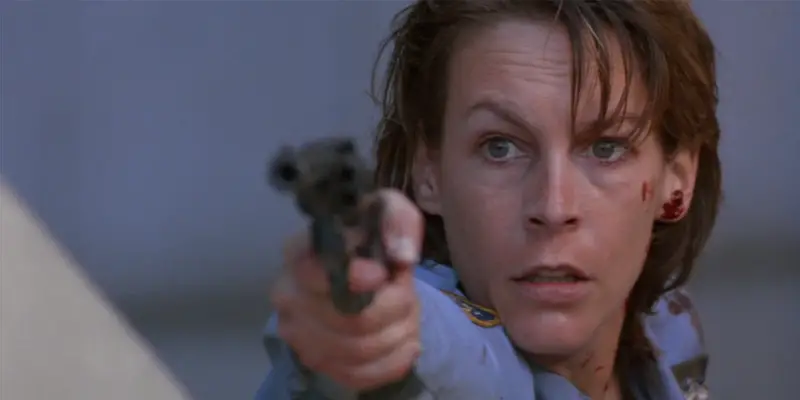
Alex is a 28 year-old West Australian who has a…
Over at our official Facebook page, we are currently posting daily film recommendations with each week being a different theme. This is a collection of those recommendations! This week’s theme is action films directed by women.
Unfortunately, outside of the work of Kathryn Bigelow, the list of action films directed by women is severely lacking, probably the least amount in any genre we’ve done since the inception of these articles. With the release of Patty Jenkins’ Wonder Woman film next year, and hopefully its success will lead to a rise of mainstream female-directed action films.
This list is just a look back at some of the highlights from the past 50 years, covering all the different types of action films that the genre has to offer.
1. Blue Steel (Kathryn Bigelow, 1989)
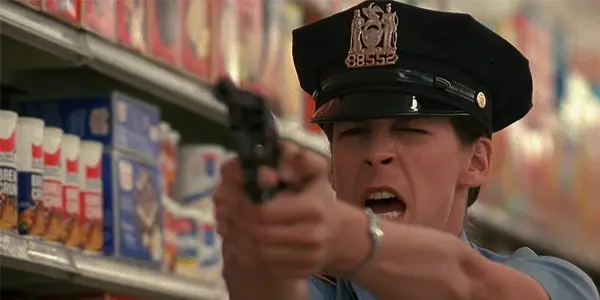
At the moment, Kathryn Bigelow is probably the most well-known female director currently working (or sadly just referred to as James Cameron’s ex-wife), mostly due to her Oscar-winning direction of The Hurt Locker, making her the first (and only) female director to win the Best Director Oscar. Whilst she’s known now for her political films (Zero Dark Thirty, K-19 and The Hurt Locker), Bigelow’s filmography is filled with a slew of great action films, which include the thriller, Strange Days, bank heist classic, Point Break, and the Western/Horror themed vampire mash-up film, Near Dark. With this large array of films, it’s hard to only pick one to put on this week’s list, so we decided to go with one of Bigelow’s more underrated efforts – Blue Steel.
Jamie Lee Curtis stars as Megan Turner, a NYPD officer who, on the first day of her job, kills a armed robber who is holding up a supermarket. Due to a lack of evidence to justify her use of lethal force, Turner is suspended from duty, only to be quickly reinstated as a homicide detective. When a psychopath starts a series of murders that all focus on Turner, she is forced into a cat and mouse game with her deadly stalker.
Bigelow’s psychological cop film highlights Bigelow’s diverse directional talents, with the ability to make different genre pictures that are all individually great and diverse. Blue Steel is also unique for being one of the only cop films to focus on a female cop who works her way through the force who is played powerfully by the always dependable Jamie Lee Curtis. Amir Mokri (who recently did Man of Steel) utilized grave cinematography to help deliver the film’s grounded and realistic atmosphere, which really helps sell the film’s more outlandish elements. Despite being a financial and critical failure upon its initial release, Blue Steel is worth re-evaluating. It is a distinctive cop film that is a step above the bland 90’s cop films that were pumped out at the time.
2. Punisher: War Zone (Lexi Alexander, 2008)
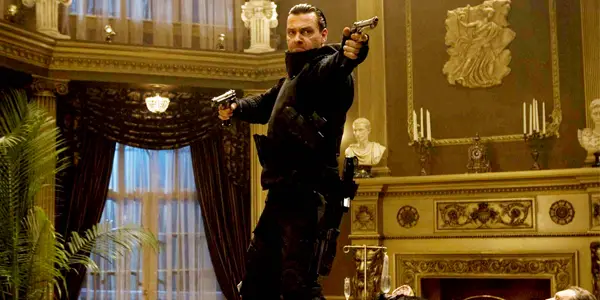
Lexi Alexander has become quite a controversial figure as of late, and between her positive endorsement of film piracy and Twitter arguments, she is a director who is usually talked about due these actions rather than her actual filmography. Alexander begun her work in Hollywood due to her achievements as a world champion in point fighting and karate, which got her work as a stunt performer.
This interest in film lead to her first directional debut, the short film Johnny Flynton, which garnered an Academy Award nomination in 2003. Her debut feature film was Green Street Hooligans, the soccer hooligan drama starring Elijah Wood and a pre-Sons of Anarchy Charlie Hunnam. She followed this up with her first and only studio film, Punisher: War Zone, a highly distinctive and ultraviolet comic book film which has gone onto become quite a cult film.
Punisher: War Zone is a standalone Punisher film, unlinked to the 2004 film starring John Travolta. War Zone features a rather simple narrative, as we follow The Punisher (Ray Stevenson) as he hunts down Jigsaw (Dominic West) a mob boss that he severely disfigured in an attempted assassination years prior. As Punisher’s one man army starts to slowly pick off Jigsaw’s mob family, Jigsaw goes to desperate attempts to fight back, recruiting any criminal or gangster willing to finally take on The Punisher himself.
As stated before, War Zone is a gruesome R-rated affair, as Alexander goes all the way when it comes to the gory comic book violence – one of the film’s strongest aspects. A joyful display of amputations and fast paced gunplay, War Zone’s unapologetic violence is a precursor to the current shift in comic book violence on-screen, as seen in this year’s Deadpool and the Netflix Marvel series’ Luke Cage and Daredevil.
Another refreshing element of the film is its contained nature, with its lack of sequel setups making sure the narrative is never diverted to insert a teaser for another movie to come. After the barrage of intrusive and often ham-fisted setups appearing in both the latest DC and Marvel films, it’s nice to see a film which is straight forward and standalone in nature. Alexander’s film, another victim of initial critical and commercial failure, is now well celebrated, a risky and thrilling action romp that delivers on its exploitative promises.
3. The Hitch-Hiker (Ida Lupino, 1953)
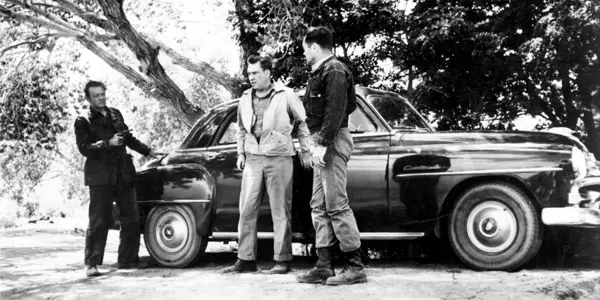
Not exactly the most action-packed film on this list, The Hitch-Hiker is a terrific noir-action film from the 1950’s, most notably the first American film noir directed by a woman – actress Ida Lupino. Beginning her acting career in the 1930’s, Lupino gained prominence in Hollywood with her roles in The Hard Way, High Sierra and They Drive By Night, highlighting her experience in the film noir genre.
Due to frequently being bored on set in between takes, Lupino gained an interest in the different functions of film-making, taking a particular liking to the directing side of film. Starting an independent film company with her husband, Lupino started to direct own feature films, starting with Never Fear in 1949. After a series of socially poignant dramas, she finally directed the all-male cast in The Hitch-Hiker, the tense film noir which has become her most prominent directing credit and not just for its contextual importance.
On the way to a planned fishing trip in Mexico, two friends Roy and Gilbert (Edmond O’Brien and Frank Lovejoy) make a grave mistake when they decide to pickup a hitch-hiker, the disturbed Emmett (William Talman). Holding them at gunpoint, the two friends slowly realise that Emmett is a wanted criminal, due to his series of roadside murders that have all begun with situations similar to their own current predicament. As the deranged Emmett starts to physically and mentally torture the two innocent men, they start to slowly try to escape before they become another set of victims in Emmett’s murderous spree.
The Hitch-Hiker is quite distinctive for a variety of reasons, most notably being a bleak film noir that’s not a cops vs robbers narrative or a typical gangster flick. Another unique feature is its setting, shifting between the claustrophobic car interior and their various stops, usually photographed in bright daytime, a drastic shift to the night-time bound film noirs of the time.
The tight, unpredictable narrative is directed terrifically by Ida Lupino who commands a classic performance out of William Talman, playing the unhinged Emmett with a scary delightfulness. One of the many classic films that is now a part of public domain, The Hitch-Hiker is an easily obtainable title that is definitely worth checking out.
4. Tank Girl (Rachel Talalay, 1995)
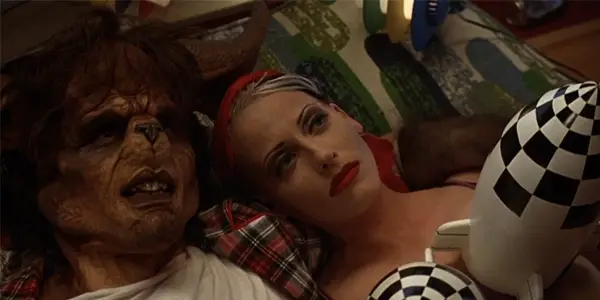
Another female directed comic book film, Tank Girl is a vastly different film from Lexi Alexander’s gory Punisher outing. A definitive product of its time, Tank Girl is a highly divisive 90’s comic book film; a trippy and experimental mainstream film that is still either loved or hated to this day due to its extremely different take on the comic book genre.
Rachel Talalay became quite prominent for her feature film debut, Freddy’s Dead: The Final Nightmare, the Nightmare on Elm Street sequel that officially shifted the tone of the series from shock horror into satirical comedic territory, due to its meta nature and pop culture cameos, a drastic shift from Wes Craven’s original film. Tank Girl, an adaptation of the British post-apocalyptic comic book series of the same name, was Talalaly’s 3rd directional outing and remains her most controversial work.
Tank Girl, a satirical riff on the Australian Mad Max series, centers on the titular Tank Girl (Lori Petty), one of the only remaining survivors of an ambiguous nuclear apocalypse, who now live in a barren Australian wasteland. The remaining electricity and water is controlled by ‘Water and Power,’ a corrupt government body that ruthlessly hold onto the precious commodity. Teaming up with her friend Jet Girl and a group of mutant kangaroo/human hybrids, they decide to finally take down Water & Power and finally have the wasteland to themselves.
Much like Alexander’s Punisher film, Tank Girl was a critical and commercial failure, being one of the most prominent due to its $20M loss at the time (a large number for 1995). Like Alex Cox’s Repo Man, the status of the film was revived by the film’s compilation soundtrack, a collection of original and current pop songs that proved to be quite popular at the time. Due to the film’s weird visuals and desire to stick to the original comic book’s offbeat narrative, it was quite a shock to mainstream audiences at the time and proves to be quite questionable to even today’s audiences.
The film’s popular soundtrack and outlandish 90’s fashions has made Tank Girl feel slightly dated today, much like most of the experimental mainstream films of that time (The Avengers, Mystery Men and Wild Wild West just to name a few). Whilst not the greatest action film ever, Talalaly’s comic book adaptation is worth noting for being one of the only action films directed by women of the 90’s outside of Kathryn Bigelow’s work.
5. Hideout in the Sun (Doris Wishman, 1960)
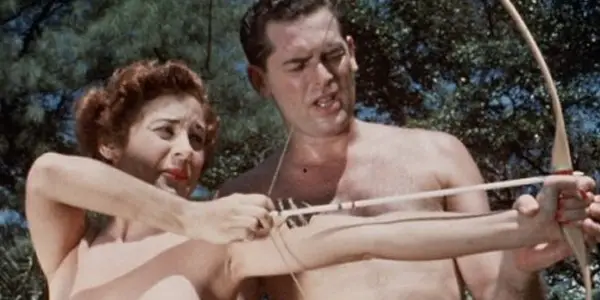
Hideout in the Sun is the debut feature of Doris Wishman, one of the most active female directors during the 1960’s and 70’s due to her large output of sexploitation films she directed at the time. Her best known titles include Deadly Weapons, Double Agent 73 and Diary of a Nudist – all exploitation films which put female nudity and shock tactics above story-telling or technical craft. There’s nothing wrong with Wishman’s filmography, as the idea of a female director creating so many profitable exploitation films during that time is quite progressive and incredibly unique for that period of film history. Hideout in the Sun is quite a basic exploitation film, focusing on the current craze of the “nudist” colonies, building a simplistic genre picture upon the controversial and shocking concept.
After holding up a bank, two brothers Duke and Steve Martin (Greg Conrad and Earl Bauer) take Dorothy (Dolores Carlos), a nudist, hostage and force her to take them to her nudist colony for refuge from the advancing police. As tensions build between the brothers due to the increasing threat of law enforcement and Steve’s growing love of the nudist lifestyle, the brothers must make a decision whether to leave the camp or not, putting both their lives at risk.
At a brisk 70 minutes, this is a pure exploitation film. Short, purely made to exploit a current trend and to provide a willing audience with adult-only content, whilst providing cheap action and thrills. The film’s short length was purposefully done for two reasons, it was cheap and easy to make, plus it’s easier to fit within a double feature, meaning that matinees could replay the film’s quite often to capitalise on ticket sales. Not the best film in our recommendation list, but we thought it was important to highlight the distinctive work of Doris Wishman, showcasing her audacious debut film.
6. The Matrix (Lily & Lana Wachowski, 1999)
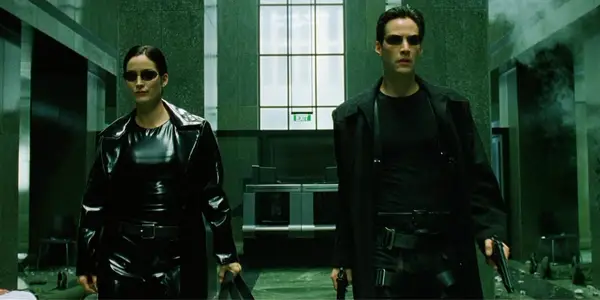
Along with being a terrific film, we must thank John Wick for reminding audiences that Keanu Reeves is a great leading man when it comes to action, a blend of stone-faced masculinity and humble charm that sets him apart from the stereotype of the “action man” protagonist. Starting off in teen comedies (Bill and Ted) and indie dramas, Reeves’ career as an action star started after the huge success of Kathryn Bigelow’s Point Break, a slightly dated heist film that has become a definitive part of 90’s pop culture lexicon. Later, with the Wachowski’s hugely influential Matrix film in 1999, Reeves cemented himself as a dependable leading man when it came to action and drama.
This is just one of the many reasons that The Matrix is still regarded as one of the greatest sci-fi films of all time, an innovative blend of philosophical science fiction mixed with Japanese-inspired action sequences that would be parodied and derived for many years to come. After their successful first film, Bound, the Wachowski’s wrote and directed The Matrix, a film amazingly not based off any existing or previous property, a thought that is quite mind-boggling in the current age of filmmaking. Whilst these film recommendations usually highlight films that people might not have seen, The Matrix is definitely a film that most audiences – both mainstream and arthouse alike – have watched at some point in their life.
Sadly, The Matrix, like many franchises, is a great film mildly diminished by its sequels, due to their messy complications of the initial premise and dependence on CGI action over creative practical action scenes. Similar franchises include Die Hard, Rambo and the Lethal Weapon series, which suffer from the need to capitalise on initial success’ and to constantly one-up the previous films bombastic action sequences.
Whilst the Wachowski’s have always been highly divisive filmmakers (Cloud Atlas is received much more positively today than during its initial release), The Matrix is always regarded as their greatest film, not only for its technical craft, but for its undeniable cultural impact boom that it created, setting off a series of aesthetic and technical shifts in action cinema that still ripple through action cinema today. Love it or hate it, you cannot deny The Matrix is an important film and if you haven’t seen it, try it for yourself.
7. Eyewitness (Muriel Box, 1956)
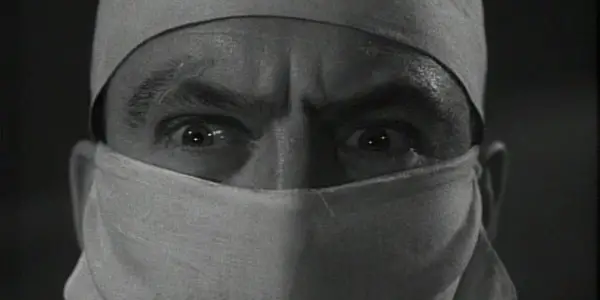
One of the very few female filmmakers working in post-war Britain, Muriel Box was quite a prolific screenwriter and director throughout the 1950’s, a rough transitional period in cinematic history. Often sidelined or treated disrespectfully, Box often worked with her husband Sydney Box, another screenwriter/director who helped Muriel start the “London Independent Producers” production company, an avenue that allowed her to create her own independent productions without the reliance of studios and the freedom to tackle more controversial and less mainstream-friendly material such as sexual themes, current politics and teenage drama.
Muriel’s directional credits feature an array of dramatic and romantic work, directing 15 feature films during her decade of directing (she retired in 1964 to focus purely on writing). Eyewitness is one of her more well known films, a nice little genre piece that is unfortunately saddled with a frequently-used generic title (IMDB lists over 10+ feature films with the same title).
After a trip to the cinema, housewife Lucy Church (Muriel Pavlow) accidentally witnesses the murder of the cinema’s manager by two local crooks, Wade and Barney (Donald Sinden & Nigel Stock). After fleeing the scene of the crime, Lucy is struck by a bus and promptly taken to the hospital. Knowing that their only witness to their murder is stuck within the hospital, Wade and Barney start to plan how to murder Lucy, who is currently stuck within a coma.
As an underrated British thriller, Eyewitness isn’t the most distinctive film of its time, but it is quite solid as Muriel Box achieves the dark atmosphere she sets out to create. Much like Ida Lupino‘s Hitch-Hiker, Muriel sets up an increasingly tense and claustrophobic scenario, a protagonist who is in a coma that is hunted by a cold-blooded killer. It is an interesting premise that has a lot of remake-potential in the hands of the right director.
Can you recommend any other action films directed by women?
Does content like this matter to you?
Become a Member and support film journalism. Unlock access to all of Film Inquiry`s great articles. Join a community of like-minded readers who are passionate about cinema - get access to our private members Network, give back to independent filmmakers, and more.













